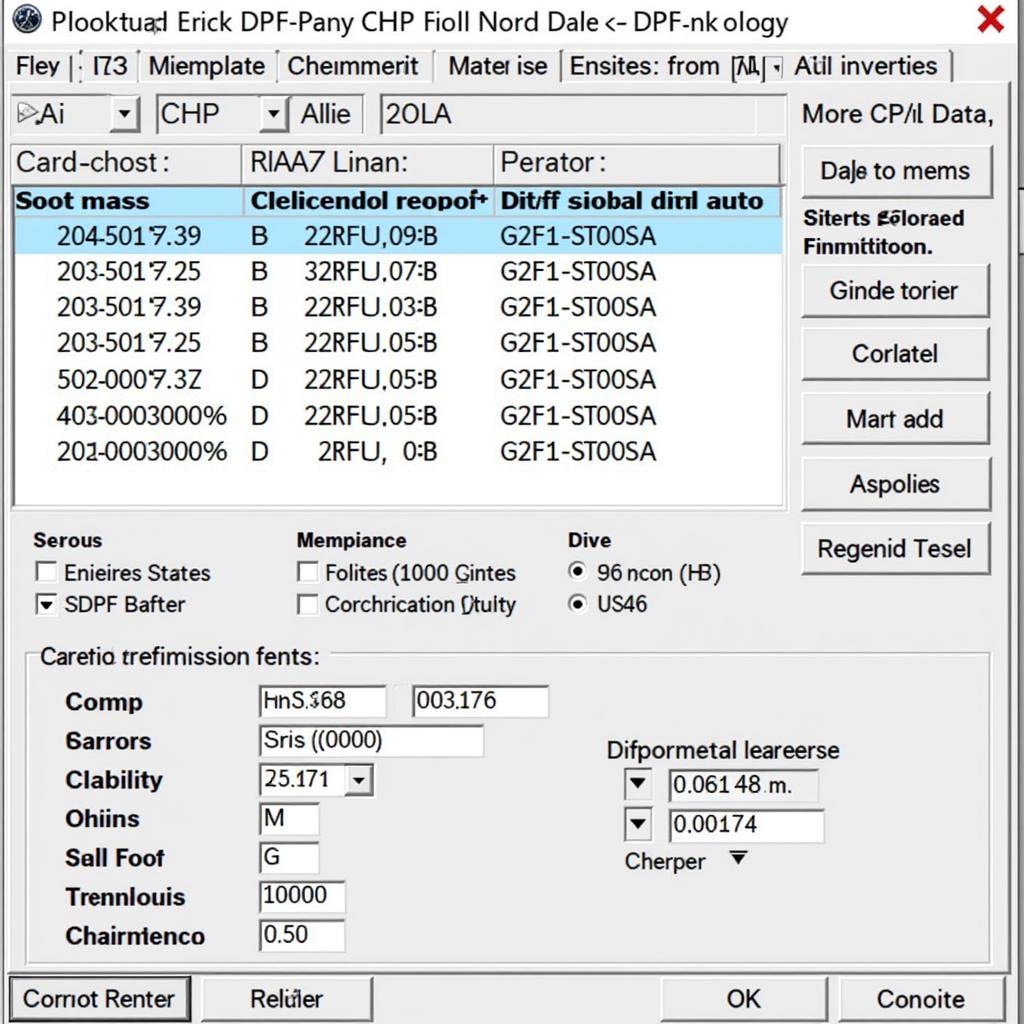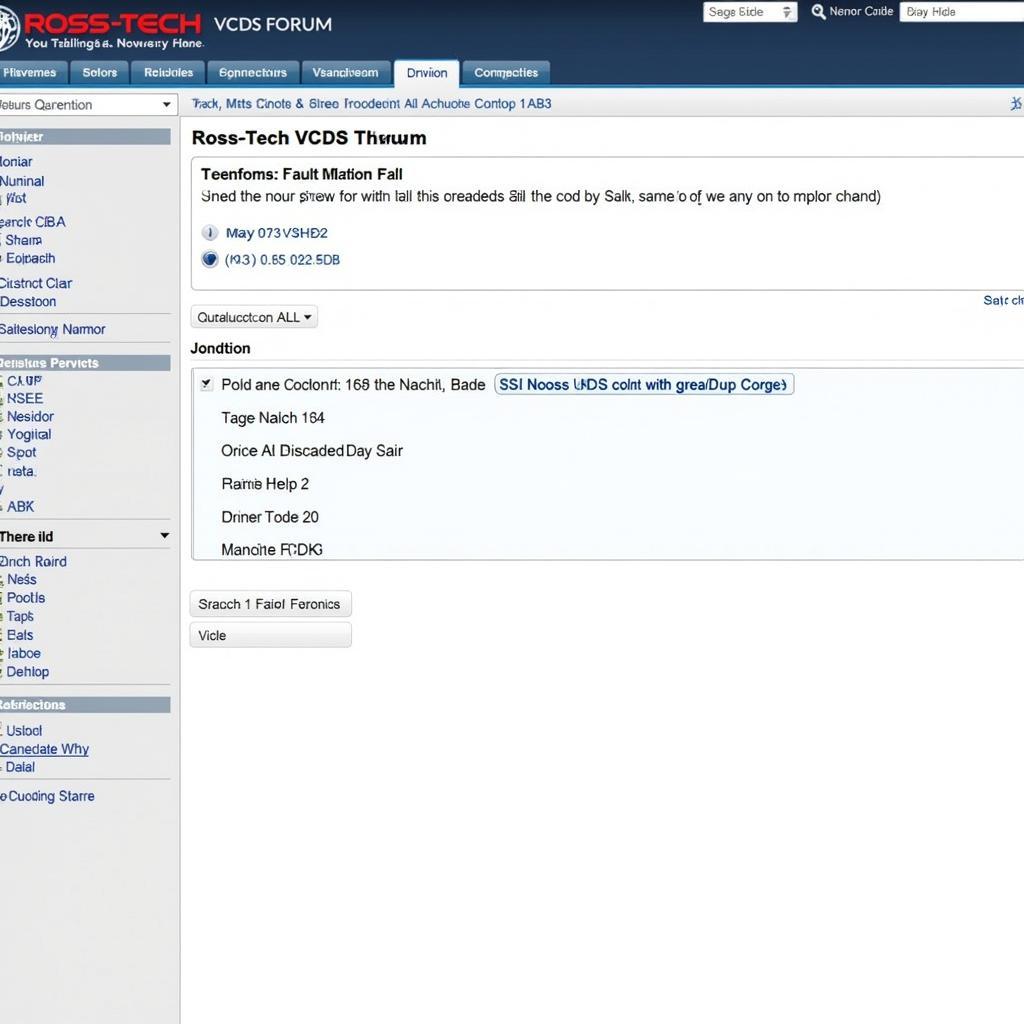VCDS injection quantity is a critical parameter for diesel engine performance and diagnostics. This article delves into the intricacies of injection quantity, its role in engine operation, and how to use VCDS (Vag-Com Diagnostic System) effectively to interpret and adjust this crucial setting. We’ll explore common issues, diagnostic procedures, and offer expert insights for both DIY enthusiasts and professional technicians.
Understanding VCDS injection quantity is crucial for maintaining optimal diesel engine performance. This parameter reflects the amount of fuel injected into each cylinder during each combustion cycle. Variations in injection quantity can significantly impact engine power, fuel efficiency, and emissions. This article provides a comprehensive guide to understanding, diagnosing, and adjusting injection quantity using VCDS. Let’s get started!
What is VCDS Injection Quantity?
VCDS injection quantity represents the precise amount of fuel delivered by the injection pump to each cylinder. This measurement, typically expressed in mg/str (milligrams per stroke), allows for fine-tuning of the fuel delivery system to ensure optimal combustion. Using VCDS, technicians can access this data to diagnose and rectify fuel system imbalances. Learn more about checking your fuel injectors with how to check fuel injectors with vcds.
Why is Injection Quantity Important?
Maintaining the correct injection quantity is paramount for several reasons:
- Optimal Power Output: Balanced injection quantities ensure each cylinder contributes equally to power generation, maximizing engine performance.
- Fuel Efficiency: Correct injection quantity minimizes fuel waste, leading to better fuel economy.
- Smooth Engine Operation: Balanced fuel delivery contributes to smoother idling and overall engine operation, reducing vibrations and noise.
- Reduced Emissions: Proper injection quantity helps maintain optimal combustion, minimizing harmful emissions.
Diagnosing Injection Quantity Issues with VCDS
VCDS provides a powerful tool for diagnosing injection quantity imbalances. Here’s a step-by-step guide:
- Connect your VCDS interface to the vehicle’s OBD-II port.
- Turn the ignition on.
- Launch the VCDS software and select the appropriate engine control module.
- Navigate to the “Measuring Blocks” or “Advanced Measurement Values” section.
- Locate the group containing injection quantity data for each cylinder.
Interpreting the data is crucial. Significant deviations between cylinders indicate potential issues. “Meet John Doe, a seasoned diesel mechanic with over 20 years of experience. John emphasizes the importance of understanding these readings: ‘Even slight variations can point towards underlying problems. Don’t ignore small discrepancies, they can escalate into major issues.'”
Common Causes of Injection Quantity Problems
Several factors can contribute to injection quantity imbalances:
- Faulty Injectors: Worn or clogged injectors can disrupt fuel delivery. For more details on fuel injection pump testing, see how to test fuel injection pump with vcds.
- Injection Pump Issues: Problems with the injection pump itself can lead to uneven fuel distribution.
- Wiring Problems: Damaged or corroded wiring can affect injector performance.
- Fuel System Contamination: Contaminants in the fuel system can clog injectors and disrupt fuel flow.
How to Adjust VCDS Injection Quantity (Advanced Users Only)
Adjusting injection quantity should only be performed by experienced technicians. Incorrect adjustments can damage the engine. You can also read about TDI injection quantity adjustments with VCDS at tdi injection quantity adjustment vcds.
What if I need to improve my MPG?
VCDS can also help you monitor and improve your fuel economy. Check out how to do mpg with vcds for a detailed guide.
“Another tip from John: ‘Regularly monitoring your injection quantity with VCDS can help you catch problems early and prevent costly repairs. It’s a valuable tool for any diesel owner.'”
Conclusion
VCDS injection quantity is a vital parameter for diesel engine health and performance. Understanding its significance and utilizing VCDS for diagnosis and adjustment can significantly improve your vehicle’s reliability, fuel efficiency, and longevity. Regular monitoring and timely intervention can prevent major issues and ensure optimal performance. Remember to consult a qualified technician for any adjustments or repairs.
FAQ
- What units are used to measure injection quantity? mg/str (milligrams per stroke).
- Can I adjust injection quantity myself? It’s recommended to consult a qualified technician.
- What are the symptoms of injection quantity problems? Rough idling, reduced power, poor fuel economy, and increased emissions.
- How often should I check injection quantity? Regular checks during routine maintenance are advisable.
- What can cause injection quantity imbalances? Faulty injectors, injection pump issues, wiring problems, and fuel contamination.
- Is VCDS essential for diagnosing injection quantity problems? Yes, it provides precise data for accurate diagnosis.
- Can VCDS be used on all diesel vehicles? VCDS is specifically designed for VAG group vehicles (Volkswagen, Audi, Seat, Skoda).
You can also find helpful information in our article on testing injectors with VCDS: test injecteur vcds.
Need help with VCDS injection quantity or other car diagnostic issues? Contact us via Whatsapp: +1 (641) 206-8880, Email: CARDIAGTECH[email protected] or visit us at 276 Reock St, City of Orange, NJ 07050, United States. Our 24/7 customer support team is ready to assist you.


